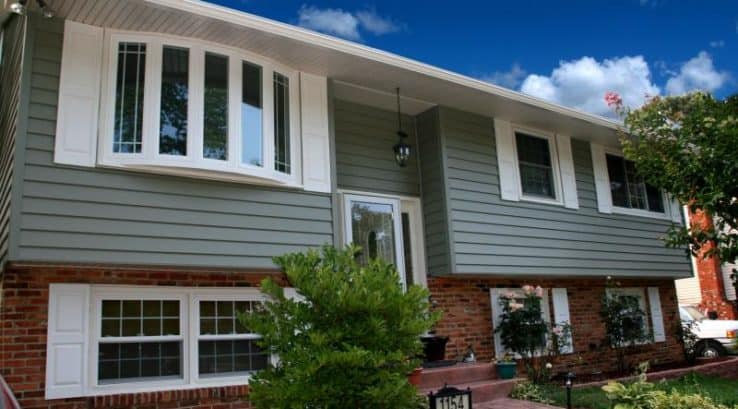Can siding be repaired, and what would be the cost of doing so? These are important questions to answer before you embark on an external home improvement project. And the short answer is that it depends. Discover more about whether siding can be repaired, and what to look for when deciding whether to repair or replace siding.
Yes, in some cases, siding can be repaired. Minor cosmetic issues, a few gaps or cracks or a damaged area of siding can often be repaired without replacing all of your existing siding.
Professionals might remove one or a few pieces of damaged siding and replace them with new pieces. They might also be able to simply caulk and seal and area to correct an issue.
Sometimes, the problem is with the installation itself and not the siding product. In those cases, addressing the way siding fits together or adding a few nails might suffice for the repair.
When Is it Time to Repair or Replace Siding?
To understand whether your home is in need of vinyl siding repairs or a replacement, it’s best to consult with a professional. They can check under your siding to ensure there’s no issue and help you understand the scope and expense of each option.
But how do you know when it’s time to call someone in to take a look? Here are some signs that can tell you your siding is in need of attention.
1. Numerous Gaps, Cracks and Eye Sores
Holes in your siding don’t look good. Forbes notes that vinyl siding — as well as window replacement — are in the top 10 home improvements that return value when you sell your home.
But that’s not likely to be true if your siding looks like it’s made of Swiss cheese. A random hole or two, especially in an inconspicuous place, probably won’t break the bank on your sales price. But if your siding is looking worse for wear, you may want to call a professional.
That’s even more true because holes in your siding can let in unwanted elements. Water can run in and cause issues, and insects and pests can crawl in and create nests. Both of those issues can lead to large expenses and hassles in the long run if you don’t get holes repaired.
2. Your Utility Bills Are Getting Higher
The U.S. Office of Energy Efficiency & Renewable Energy notes that vinyl siding can improve the overall energy efficiency of your home. That can lead to a reduction in your utility costs.
Outdated or damaged siding is less likely to provide this benefit, though. So, if your utility bill starts to creep up, and you determine no one is leaving lights on or running the AC unnecessarily, you might want to inspect your siding.
3. You Discover a Moisture Problem
If you notice that your siding is hanging oddly, buckling or displaying cracks, take a look behind it. You might have water damage causing an issue — or water might have seeped through the opening and started to cause mold.
You might also have your siding examined if you find mold or mildew in your house. Sometimes, this can be a sign that exterior water is making it through your siding and into the walls or ceilings of your home. A vinyl siding repair person or installer can help you understand whether replacement or repair can stop the issue.
Attack Your Vinyl Siding Repair or Replacement Head On
It can be concerning to see a problem with the exterior of your home — especially when it’s with the siding that’s meant to protect your house from the elements. If you suspect you need siding repair or replacement, don’t wait for more damage to occur. Contact us today to set up a consultation.


